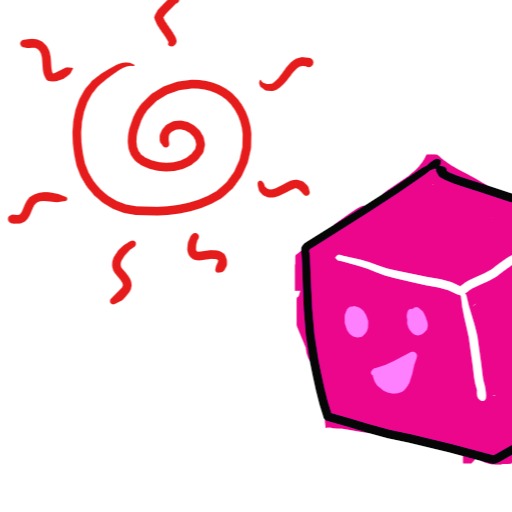| 일 | 월 | 화 | 수 | 목 | 금 | 토 |
|---|---|---|---|---|---|---|
| 1 | 2 | 3 | 4 | 5 | ||
| 6 | 7 | 8 | 9 | 10 | 11 | 12 |
| 13 | 14 | 15 | 16 | 17 | 18 | 19 |
| 20 | 21 | 22 | 23 | 24 | 25 | 26 |
| 27 | 28 | 29 | 30 | 31 |
Tags
- Linux
- 딥러닝
- 모두를 위한 딥러닝
- 펌웨어
- 인터럽트
- Generalized forward
- Interrupt
- 모두를 위한 딥러닝]
- 디바이스 드라이버
- 리눅스
- GPIO
- 밑바닥부터 시작하는 딥러닝
- file descriptors
- 운영체제
- Network layer
- 텐서플로우
- Class Activation Map
- function call
- TensorFlow
- RDT
- LED
- 신경망 첫걸음
- Switch
- 스위치
- Transport layer
- 신경망
- 3분 딥러닝
- demultiplexing
- Router
- LED 제어
Archives
- Today
- Total
건조젤리의 저장소
6-3. Q-Network 구현 (Cart Pole) 본문
김성훈 교수님의 강의내용을 정리한 내용입니다.
출처 : http://hunkim.github.io/ml/
모두를 위한 머신러닝/딥러닝 강의
hunkim.github.io

Cart Pole이란 막대의 밑 부분을 좌우로 움직여 중심을 잡는 게임이다.

4개의 상태를 가지고 있다.
막대가 넘어지지 않는 이상 보상은 항상 1이다.
막대가 넘어지게 되면 끝난다.

막대가 넘어지게 되면 보상으로 -100을 받게 설정한다.
Frozen Lake와 다르게 입력값을 One-hot으로 넣지 않는다! (그대로 넣는다)

4개의 상태를 입력으로 넣게되면 2개중 하나의 행동이 출력으로 나오게 된다.

변수를 만들때 Xavier_initializer()을 사용해보자~!

Cost는 제곱오차를 이용하고, 최적화 함수는 Adam을 이용한다.

전체 네트워크 설정 코드

학습 코드

결과를 계산하고 테스트 해보는 코드이다.
막대가 평균적으로 500프레임 이상 서있는다면 끝낸다.

결과는... 처참하다!

이유는 무엇일까?
- 신경망의 크기가 너무 작음
- 샘플들 간의 유사성
- 불안정한 목표
다음장에서 자세히 설명하도록 하겠다!
구현 코드 (환경: ubuntu:16.04 python 3.6)
|
1
2
3
4
5
6
7
8
9
10
11
12
13
14
15
16
17
18
19
20
21
22
23
24
25
26
27
28
29
30
31
32
33
34
35
36
37
38
39
40
41
42
43
44
45
46
47
48
49
50
51
52
53
54
55
56
57
58
59
60
61
62
63
64
65
66
67
68
69
70
71
72
73
74
75
76
77
78
79
80
81
82
83
84
85
86
87
88
89
90
91
|
import numpy as np
import tensorflow as tf
from collections import deque
import gym
env = gym.make('CartPole-v0')
# Constants defining our neural network
learning_rate = 1e-1
input_size = env.observation_space.shape[0]
output_size = env.action_space.n
X = tf.placeholder(tf.float32, [None, input_size], name="input_x")
# First layer of weights
W1 = tf.get_variable("W1", shape=[input_size, output_size],
initializer=tf.contrib.layers.xavier_initializer())
Qpred = tf.matmul(X, W1)
# We need to define the parts of the network needed for learning a policy
Y = tf.placeholder(shape=[None, output_size], dtype=tf.float32)
# Loss function
loss = tf.reduce_sum(tf.square(Y - Qpred))
# Learning
train = tf.train.AdamOptimizer(learning_rate=learning_rate).minimize(loss)
# Values for q learning
max_episodes = 5000
dis = 0.9
step_history = []
# Setting up our environment
init = tf.global_variables_initializer()
sess = tf.Session()
sess.run(init)
for episode in range(max_episodes):
e = 1. / ((episode / 10) + 1)
step_count = 0
state = env.reset()
done = False
# The Q-Network training
while not done:
step_count += 1
x = np.reshape(state, [1, input_size])
# Choose an action by greedily (with e chance of random action) from
# the Q-network
Q = sess.run(Qpred, feed_dict={X: x})
if np.random.rand(1) < e:
action = env.action_space.sample()
else:
action = np.argmax(Q)
# Get new state and reward from environment
next_state, reward, done, _ = env.step(action)
if done:
Q[0, action] = -100
else:
x_next = np.reshape(next_state, [1, input_size])
# Obtain the Q' values by feeding the new state through our network
Q_next = sess.run(Qpred, feed_dict={X: x_next})
Q[0, action] = reward + dis * np.max(Q_next)
# Train our network using target and predicted Q values on each episode
sess.run(train, feed_dict={X: x, Y: Q})
state = next_state
step_history.append(step_count)
print("Episode: {} steps: {}".format(episode, step_count))
# If last 10's avg steps are 500, it's good enough
if len(step_history) > 10 and np.mean(step_history[-10:]) > 500:
break
# See our trained network in action
observation = env.reset()
reward_sum = 0
while True:
#env.render()
x = np.reshape(observation, [1, input_size])
Q = sess.run(Qpred, feed_dict={X: x})
action = np.argmax(Q)
observation, reward, done, _ = env.step(action)
reward_sum += reward
if done:
print("Total score: {}".format(reward_sum))
break
|
cs |
'공부 기록 > 모두를 위한 딥러닝 (RL)' 카테고리의 다른 글
| 7-2. DQN 구현 (NIPS 2013) (1) | 2019.11.22 |
|---|---|
| 7-1. DQN (0) | 2019.11.22 |
| 6-2. Q-Network 구현 (Frozen Lake) (0) | 2019.11.20 |
| 6-1. Q-Network (0) | 2019.11.19 |
| 5-2. Windy Frozen Lake 구현 (0) | 2019.11.19 |




